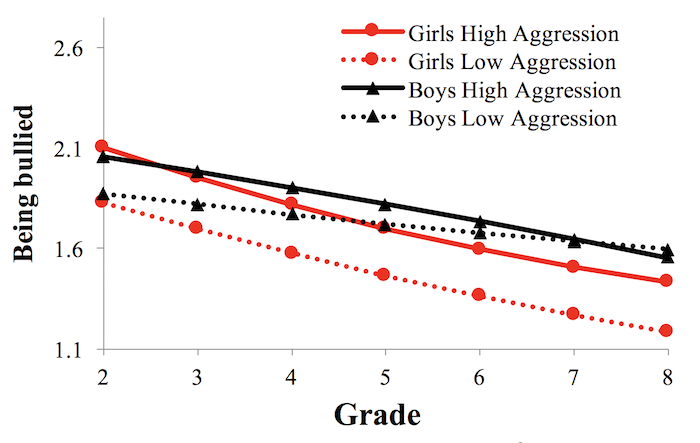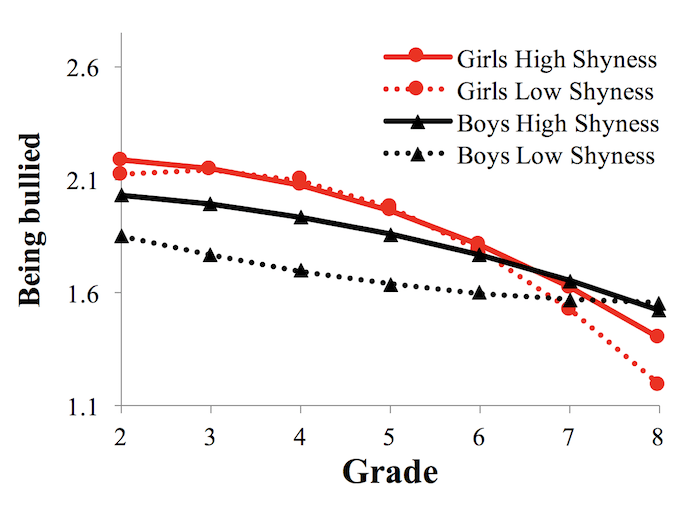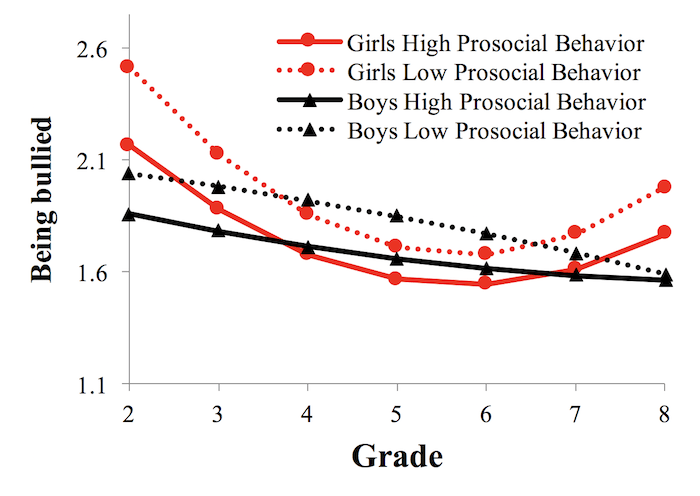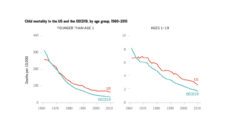According to the U.S. Department of Education, approximately 28% of middle and high school students reported being bullied in 2010-2011, suggesting that it is a fairly common problem among youth. For some, bullying lasts for a long time and these children are at higher risk for negative consequences. Therefore, it is important to understand what makes youth more likely to be bullied and remain bullied over time. We conducted a study over seven years to explore whether social behaviors youth show in early school set the stage for being bullied across the school years.
We asked 576 youth and their teachers to complete a survey every spring, from second grade through eighth grade. Youth reported how often other kids tried to hurt them physically or verbally and manipulated their peer relationships, for example, through silent treatment. Teachers reported how often each youth showed physical aggression (ex., starting fights), relational aggression (ex., gossiping), prosocial behavior (ex., including a peer in an activity), and shy behavior (ex., looking nervous around others).

Overall, we found that social behaviors in second grade made a greater difference in how much youth were bullied among boys during elementary school and among girls through middle school. In Figures 1 through 3, the x-axis shows the grade in school, and the y-axis shows how much youth were bullied. Aggression made both boys and girls more likely to be bullied in second grade. Boys and girls, however, were influenced by aggression differently over time (see Figure 1). Boys who were more aggressive (black solid line) were bullied more during elementary school than boys who were less aggressive (black dotted line), but the difference diminished over time. By eighth grade, these boys were bullied about the same amount. On the other hand, girls who were more aggressive (red solid line) were bullied more than girls who were less aggressive (red dotted line) over time, and the difference was significant in eighth grade.

Shyness made both boys and girls more likely to be bullied in second grade. Boys and girls were also influenced by shyness differently over time (see Figure 2). Shyness made boys more likely to be bullied through fifth grade (compare black solid line and black dotted line), but did not influence how much they were bullied by eighth grade. In contrast, girls who were more shy (red solid line) and girls who were less shy (red dotted line) were bullied about the same amount during elementary school, but the difference became larger after sixth grade. In eighth grade, girls who were more shy were bullied significantly more than girls who were less shy.

Low levels of prosocial behavior made both boys and girls more likely to be bullied (see Figure 3). Prosocial behavior also influenced boys and girls differently over time. Boys who were less prosocial (black dotted line) were bullied more than boys who were more prosocial (black solid line) during elementary school. The difference diminished over time, and these boys were bullied about the same amount by eighth grade. Girls who were less prosocial (red dotted line) were bullied more than girls who were more prosocial (red solid line) throughout the school years, although the difference in eighth grade was not significant.
This research suggests that boys who are less aggressive and shy, and more prosocial are less likely to be bullied in elementary school. On the other hand, girls who are less aggressive and shy, and more prosocial in early elementary school are less likely to be victimized throughout their time in school. For prevention of bullying, it may be helpful to 1) teach youth how to negotiate their wants in a non-threatening manner and 2) encourage them to interact with peers proactively. However, schools may need more than programs that are designed to reduce aggression and shy behavior. Given that low levels of prosocial behavior put youth at risk for being bullied, schools may benefit from programs that teach students prosocial behavior as well.
This post is based on the article authored by Niwako Sugimura, Daniel Berry, Wendy Troop-Gordon, and Karen Rudolph.
Graphs adapted from Sugimura, N., Berry, D., Troop-Gordon, W., & Rudolph, K. D. (2017). Early social behaviors and the trajectory of peer victimization across the school years. Developmental Psychology, 53(8), 1447-1461.
Feature image: andresr, iStock, used for illustrative purposes only, posed by model.













